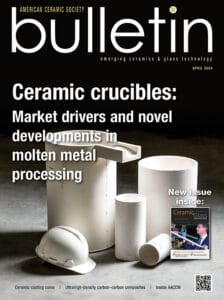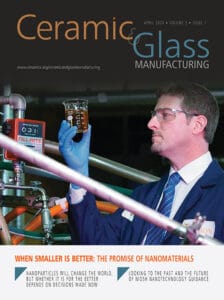ECD Bridge Building Awardee 2023

Paolo Colombo is professor of Materials Science and Technology in the Department of Industrial Engineering, University of Padova, Padova, Italy, where he earned a degree in chemical engineering in 1985 and a diploma in glass engineering in 1988. He was assistant professor at University of Padova (1990–1998) and associate professor at the University of Bologna (1998–2005). He is also adjunct professor of materials science and engineering at Pennsylvania State University, visiting professor of mechanical engineering at University College London, academic advisor at Harbin Institute of Technology, China, and a member of the EPSRC Peer Review College (UK). He was a Fulbright Visiting Scholar at Pennsylvania State University (1991), Foreign Scientist at INSA, Lyon, France (2015), and DGF Mercator Professor at the Technical University Bergakademie Freiberg, Germany (2016).
Colombo is president of the International Ceramic Federation and an Academician of the World Academy of Ceramics, Academician of the European Academy of Sciences, Fellow of The American Ceramic Society, The Institute of Materials, Minerals and Mining, and The European Ceramic Society.
He received the Global Star Award (ECD-ACerS), Edward C. Henry Award (ED-ACerS), Global Ambassador Award (ECD-ACerS), Bridge Building Award (ECD-ACerS), and awards from other organizations.
Colombo published more than 300 papers in peer-reviewed journals and co-edited two books. His h-index is 70. He has coorganized many international conferences and often speaks on the topic of porous ceramics, polymer-derived-ceramics, and additive manufacturing of ceramics.
He is the editor-in-chief of Open Ceramics and is on the editorial boards of the Journal of the American Ceramic Society; Materials Letters; Ceramics International; Journal of Porous Materials; Journal of Asian Ceramic Societies; and Advances in Applied Ceramics: Structural, Functional and Bioceramics.
TITLE: Additive manufacturing of ceramics from liquid feedstocks
Abstract: Additive manufacturing of polymeric materials has reached a far greater maturity with respect to ceramics, the latter being somewhat limited by their high melting temperatures and the processing issues related to handling of feedstocks containing a large volume of particles. Processing slurry-based feedstocks, in fact, poses several challenges: a high amount of powder is required to promote densification and results in high viscosity, scattering and sedimentation phenomena in vat photopolymerization processes, as well as clogging problems at the nozzle for extrusion-based processes. Some of these issues can be solved or mitigated when using all liquid feedstocks. Our research activities have therefore focused on additive manufacturing of ceramics from liquid feedstocks. In particular, we investigated the use of preceramic polymers as well as geopolymers and sol-gel solutions. Despite the many advantages related to their liquid nature, there are also some challenges related to the reactivity of sol-gel systems and to the high amount of solvent usually present. Here, our strategies for producing high quality ceramic components using a variety of liquid feedstocks and different additive manufacturing techniques, from direct ink writing, digital light processing and two photon polymerization to robotic and volumetric additive manufacturing will be presented.
Subscribe to Ceramic Tech Today

Don’t miss the latest ceramic and glass materials news. Receive the CTT newsletter to your email three times a week by subscribing at this link.
Subscribe to Ceramic & Glass Manufacturing Weekly

Don’t miss the latest ceramic and glass business news. Receive the C&GM Weekly newsletter to your email every Monday by subscribing at this link.


